Shorebirds are celebrated each year on September 6th. The Western Hemisphere Shorebird Reserve Network (WHSRN) (a conservation initiative for protecting critical habitats for shorebirds throughout the Americas) created it in 2012. The main goals of this date are to promote conservation of shorebirds and their habitats, to raise public awareness about the need for ongoing shorebird research and monitoring, and to introduce shorebirds and their importance to more people.
To celebrate this day, here are some interesting facts about these amazing birds.
What is a shorebird?
Shorebirds are members of the order Charadriiformes that includes sandpipers, plovers, avocets, jacanas, oystercatchers, and phalaropes. This group has a variety of shapes, plumages and sizes, but common characteristics are:
- Long toes and long thin legs for walking in muddy, drowned or floodable grounds.
- Long bill specialized to find food in those environments.
- Mottled plumage for camouflage.
They also inhabit intertidal mudflats, sandy beaches, rocky coastlines and freshwater wetlands; you can even find them in salt and shrimp farms. There, they feed insects, aquatic invertebrates, small crustaceans and mollusks. This sets them apart from waterbirds.
Every shorebird is a water bird, but not every water bird is a shorebird!
Shorebirds are commonly classified as water birds along with sea birds (like gulls) and wading birds (like herons and egrets). Look at the pictures below. What differences do you notice between the Great Egret (Ardea alba) and the Lesser Yellowlegs (Tringa flavipes)?
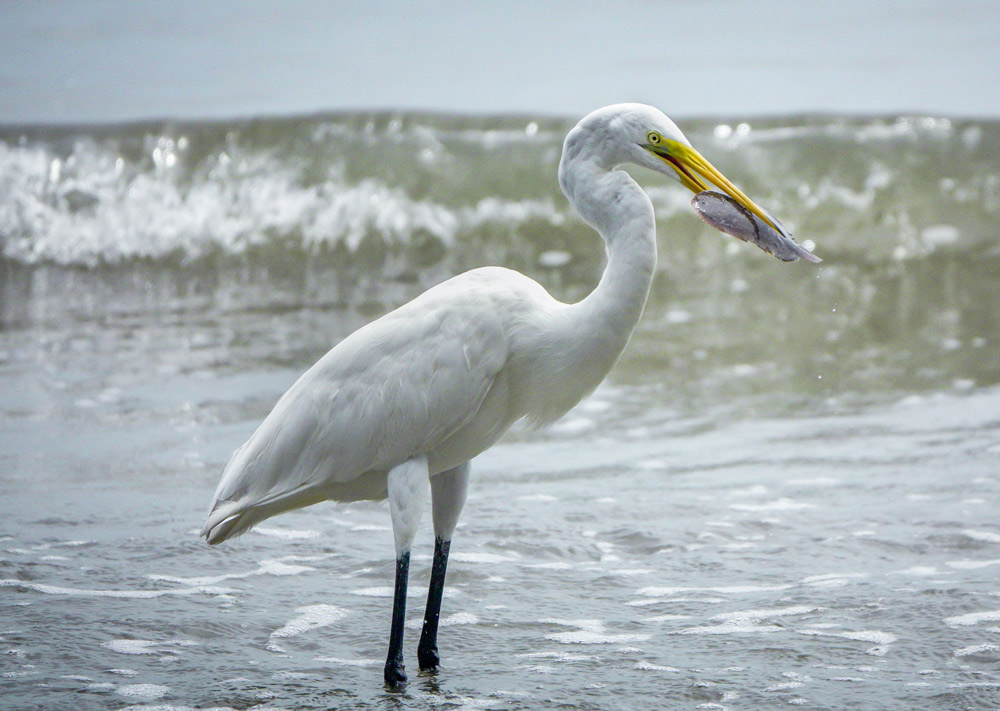
Ardea alba – Great Egret. Victor Mendoza, July 2021.
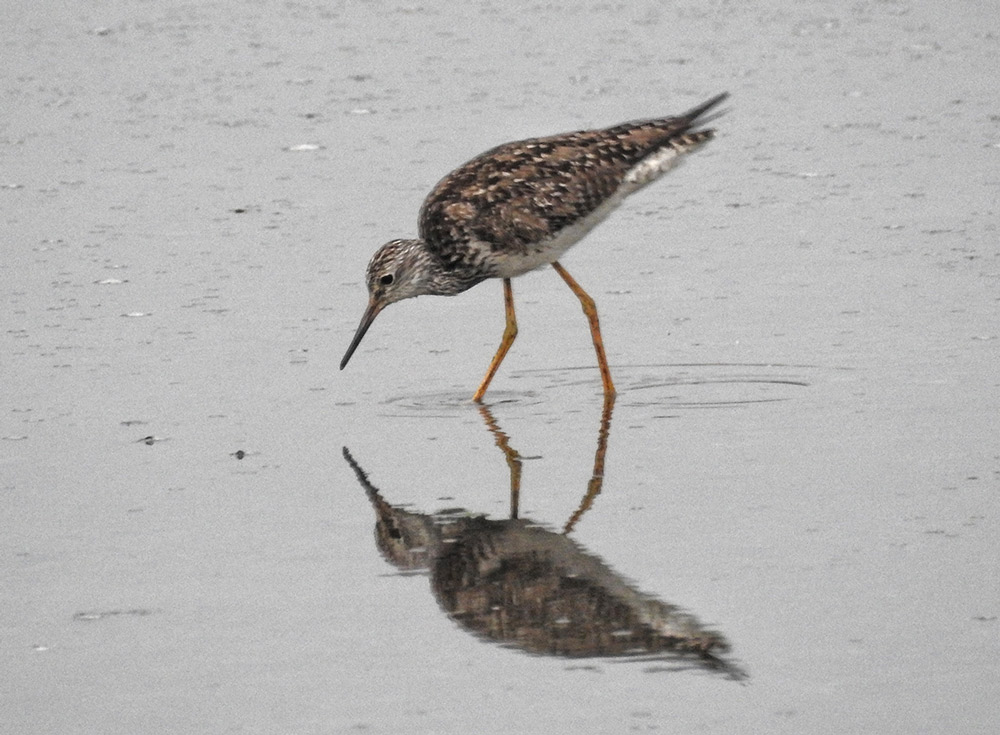
Tringa flavipes – Lesser Yellowlegs. Myrnamaría Galindo, May 2023.
What they feed and where they can be found! Normally shorebirds will prefer shallow water where they can feed from the mud. The other kinds of waterbirds prefer deeper water or sea where they can fish.
Shorebirds connect people and hemispheres.
Another incredible fact about shorebirds is their long distance migration every winter. Shorebirds can fly thousands of miles non-stop, even crossing from one hemisphere to another. Their movements coincide with the abundance and availability of food in breeding and non-breeding sites.
They must prepare for this long trip searching for food and better weather conditions, fighting against wind, storms, rainfall and predators. Therefore, they increase their muscle mass and fat reserves on previous days. Species such as Whimbrel (Numenius phaeopus) fly more than 4300 miles in non-stop flight from Canada to South America over six days. Other shorebirds such as Red Knot (Calidris canutus) or Hudsonian Godwit (Limosa haemastica) can fly even more!
Many individuals stop and take a rest during their trip or spend the whole winter in Central America. When you watch a shorebird think about all the people, lands and history that brings on its wings!
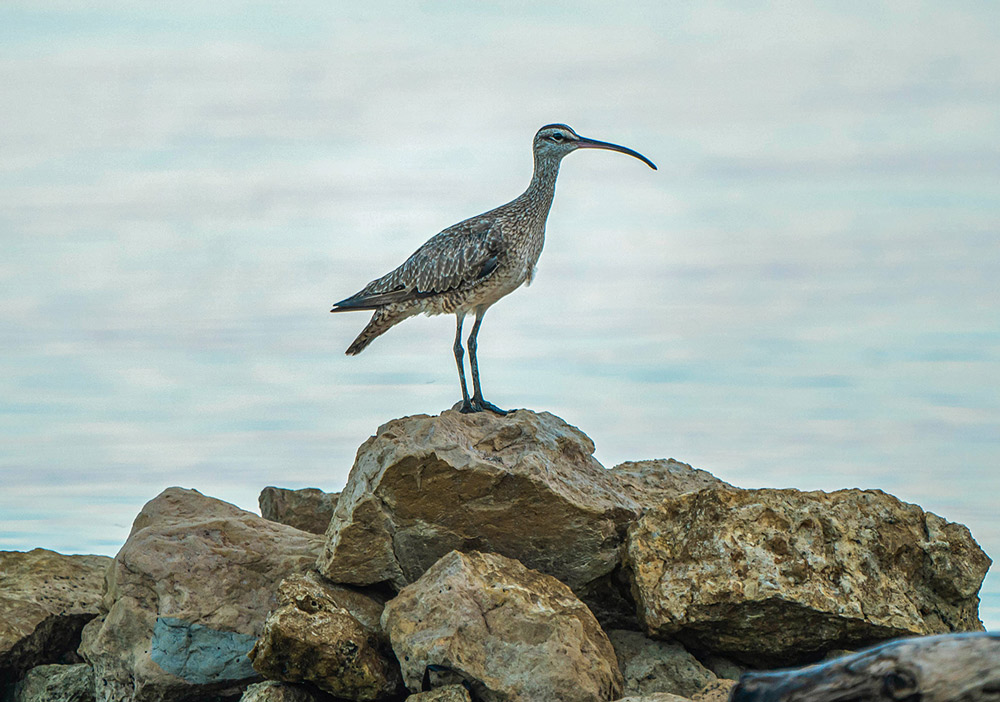
Numenius phaeopus – Whimbrel. María Alejandra Gutierrez, September 2020.
Wetlands in Guatemala: important stopovers.
In Guatemala there are more than 40 species of shorebirds, approximately 36 of them are migratory that use Guatemala as a rest site or stopover. They can be found mostly in the Atlantic and Pacific coast of the country, but also in some cases in freshwater wetlands. Non-profit organizations and biologists in the country have extensive knowledge and research of stopovers in the Atlantic coast. Most recently, some women biologists have taken actions to improve the knowledge of shorebirds in the Pacific Coast working in monitoring, nest sites and environmental education.
FLAAR Mesoamérica has documented some of these incredible birds in their field trips. We have taken photos of them in our Livingston Project. Also, many of the areas that we visit are important wetlands that serve as stopovers for shorebirds. Even when our work has focused on larger water birds (like egrets and herons), we didn’t want to miss the opportunity to honor these magnificent and champion flyers!
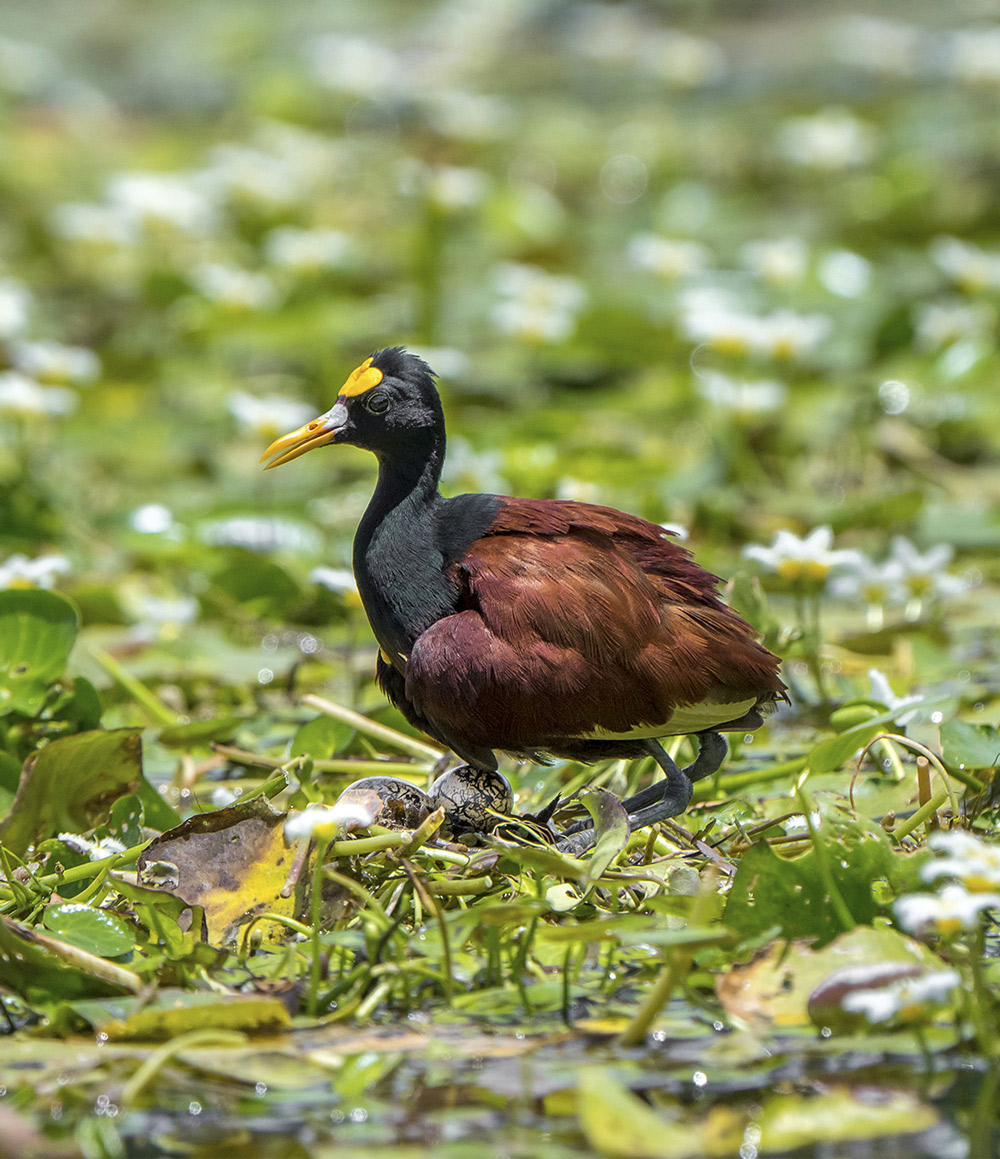
Jacana spinosa – Northern Jacana. David Arrivillaga, September 2021.
You can learn more about Northern Jacana here in our news.
Why do they need attention?
Because of their life cycles migratory shorebirds are difficult to monitor and protect. Also, human activities such as pollution, habitat loss and climate change have made them more vulnerable. A research published in this year reported that 26 of 28 species analyzed are in danger and more than half of the species have lost more than 50% of their abundance.
Shorebirds populations are one of the groups that showed the most dramatic declines since the 1800s. In addition, over-harvesting, presence of vehicles, motorcycles, pets and tourism activities without planning in breeding sites are decreasing shorebirds populations.
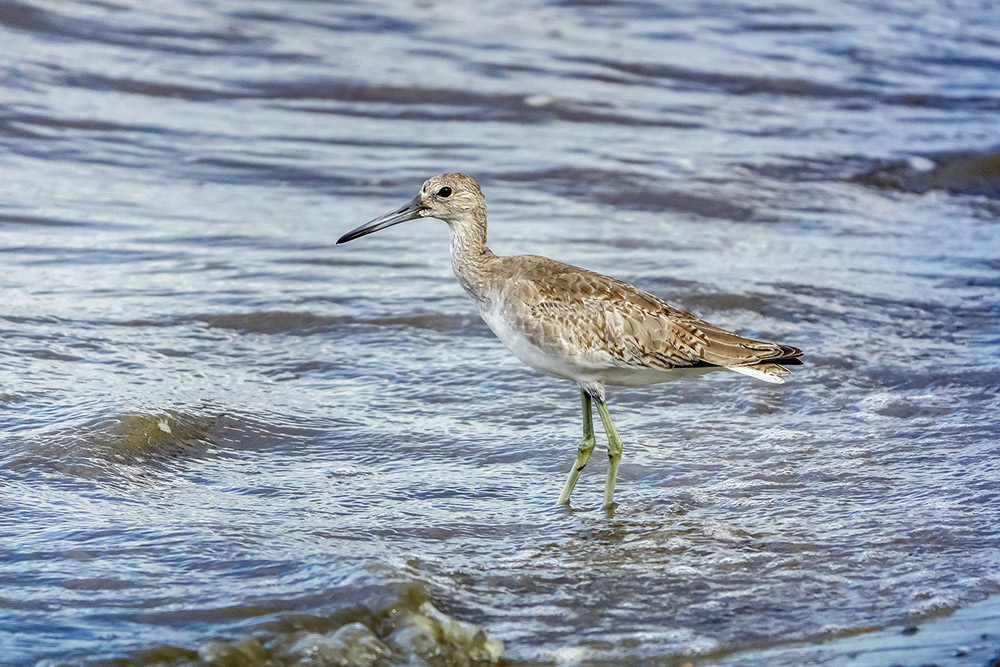
Tringa semipalmata- Willet. Victor Mendoza, October 2021.
YOU CAN HELP!
Shorebirds need us and we need them. By conserving their habitats we also protect the ecosystem services that these habitats provide to humans (for example, wetlands are essential for water filtration). Furthermore, shorebirds make for us many ecological processes that we can’t easily see (they regulate benthic communities, transport nutrients to soils…).
Scientists need to know more about shorebirds, their distribution and stopovers in order to create actions to protect them. And you can help this cause!
Each year for the #WorldShorebirdDay, Global Shorebird Counts take place all over the world. This year from September 2nd to September 8th you can join the counting.
What do you need?
- An eBird account
- Go to any wetland or coastal area
- Invite your friends to join you to identify and count how many shorebirds you see.
Share your checklist with the account WorldShorebirdsDay. Continue learning about shorebirds and helping them to be safe in their long flights!

Actitis macularius – Spotted Sandpiper. Victor Mendoza, October 2021.
A complete guide to shorebirds from the Pacific Coast of Guatemala can be found here.
Bibliography
- 2010
- Coastal & Marine Birds. Chapter 12 from Northwest Atlantic Marine Ecoregional Assessment • Phase 1 Report. North California.
Available online:
www.conservationgateway.org/ConservationByGeography/NorthAmerica/UnitedStates/edc/Documents/Chapter-12-Seabirds-20100329.pdf/
- 2023
- Double Your Impact for Shorebirds at this Year’s Global Shorebird Count: 1-7 September 2023. Caribbean. Accessed on September 4, 2023..Available online:
www.birdscaribbean.org/2023/08/double-your-impact-for-shorebirds-at-this-years-global-shorebird-count-1-7-september-2023//
- 2021
- Guía de aves de la costa del Pacífico Guatemalteco. Guatemala.Available online:
https://conap.gob.gt/wp-content/uploads/2021/11/Guia-de-Aves-de-la-Costa-del-Pacifico-Guatemalteco.pdf/
- 2020
- ¿Qué hacen las aves playeras por nosotros?. Colombia. Accessed on September 4, 2023.Available online:
https://calidris.org.co/2020/08/31/que-hacen-las-aves-playeras-por-nosotros/
- 2022
- Ruta migratoria, fenología y sitios de parada del Zarapito Pico Recto (Limosa haemastica) durante su ciclo migratorio (2016-2017) entre Chiloé y Alaska. Ornitología Tropical. Vol.33, No. 1.Available online:
http://dx.doi.org/10.58843/ornneo.v33i1.961/
- 2018
- An update on the inventory, distribution and residency status of bird species in Guatemala. Bulletin of the British Ornithologists Club. Vol. 138, No. 3. Pages 148-229.Available online:
http://dx.doi.org/10.25226/bboc.v138i3.2018.a2/
- 2020
- Abundance and distribution of wintering shorebirds along the Pacific coast of Guatemala. Wader Study Group Bulletin. Vol. 127, No. 3.Available online:
http://dx.doi.org/10.18194/ws.00200/
- 2020
- 6 de septiembre: Día Mundial de las Aves Playeras. Chile. Accessed on September 4, 2023.Available online:
www.redobservadores.cl/?p=5473/
- 2022
- Developing Bird Friendly Practices in Guatemala’s Shrimp Farms. Guatemala. Accessed on September 4, 2023.
Available online:
https://whsrn.org/developing-bird-friendly-practices-in-guatemalas-shrimp-farms//
- 2020
- Movements and migration of Whimbrel Numenius phaeopus from Birds of the World. Accessed on September 4, 2023.Available online:
https://birdsoftheworld.org/bow/species/whimbr/cur/movement#mig/
- 2023
- Accelerating declines of North America’s shorebirds signal the need for urgent conservation action. Ornithological Applications. Vol. 125, No.2.
Available online:
https://doi.org/10.1093/ornithapp/duad003/
- 2016
- World Shorebirds Day. Accessed on September 4, 2023.
Available online:
www.manomet.org/publication/world-shorebirds-day//
- 2020
- World Shorebirds Day. Accessed on September 2, 2023.Available online:
https://whsrn.org/world-shorebirds-day//
- 2019
- SITE: About shorebirds. Shorebirds Status. Accessed on September 4, 2023.Available online:
https://whsrn.org//
- 2000
- Shorebirds. Fish and Wildlife Habitat Management Leaflet Number 17. North America.
Written by Myrnamaría Galindo

